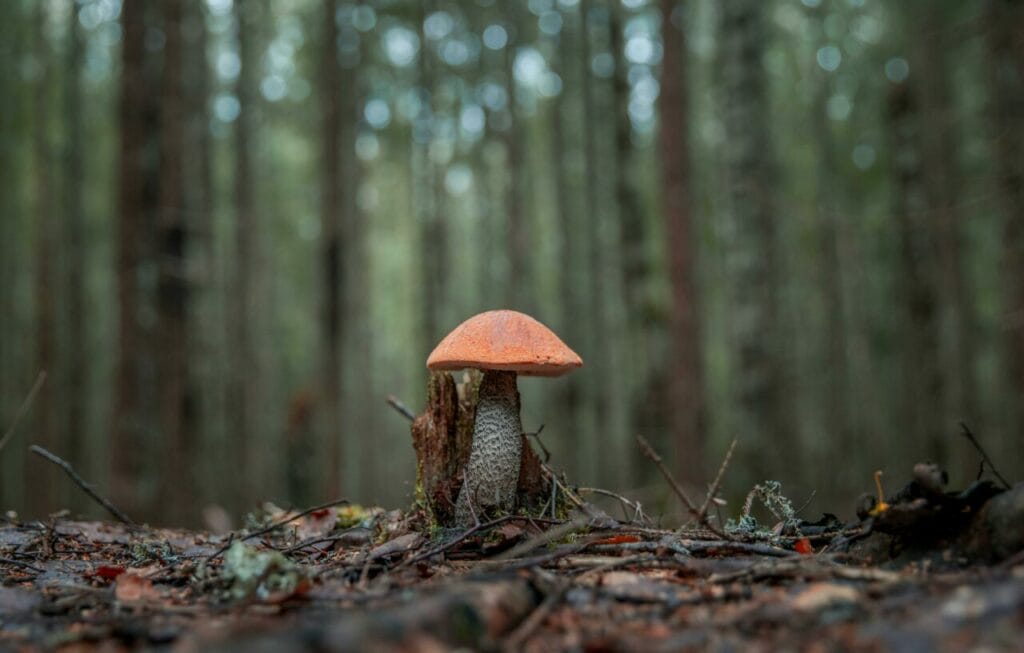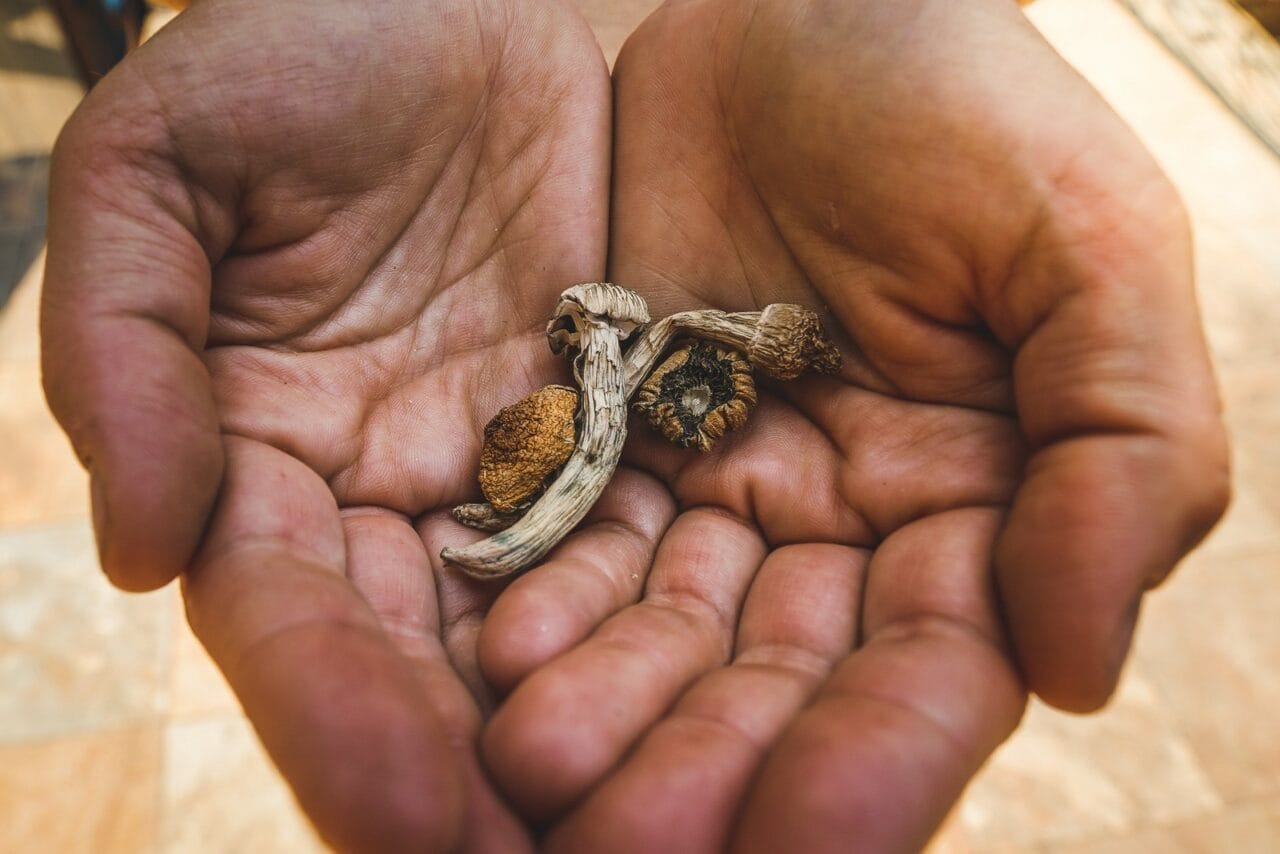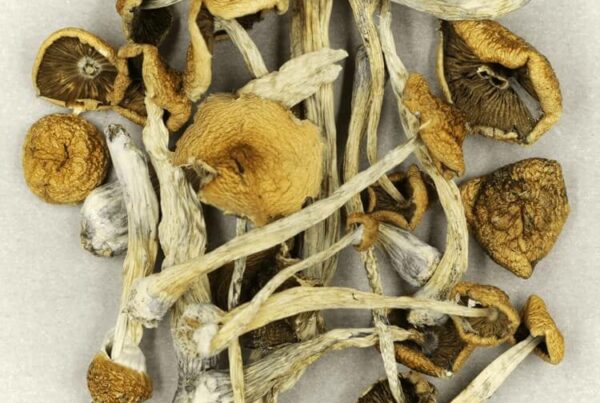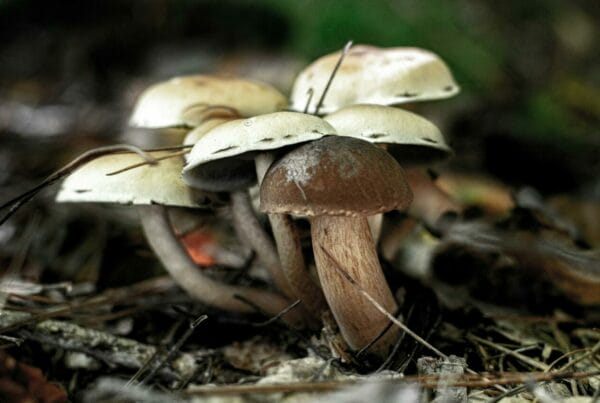Dried shrooms are amongst the most sought-after psychedelics available today. If you’ve heard about them and considered trying them out, but are unsure if they’re the right fit for you, we’re here to help.
It’s quite normal for novices to feel uncertain about which psychedelic to begin with. We’re here to clarify how dried mushrooms stand apart from other substances and why they might be an excellent choice for your first psychedelic experience.
[toc]Key Takeaways:
- Psilocybe’s active compound is the most studied psychedelic for mental health due to its safety, low potential for abuse, and brief duration of effects.
- Dehydrated Psilocybe is the most common form, as it preserves potency and extends shelf life.
- Psilocybin activates the serotonin 5-HT2A receptor, leading to heightened perception, vivid imagery, complex hallucinations, and time distortions.

Psilocybin Mushrooms: An Exploration of Psychedelic Fungi
A psilocybin mushroom contains the psychoactive compounds, psilocybin and psilocin, which are responsible for the hallucinogenic effects experienced by users. The most famous species, Psilocybe cubensis, has a light brown cap with dark spots and a unique shape. Various other species in the Psilocybe genus also produce these compounds.
Some toxic mushrooms that contain dangerous toxins resemble Psilocybe, which is why we strongly discourage mushroom picking.
Historically, many mushrooms played a significant role in Central American spiritual ceremonies. Today, scientists are exploring their potential for treating mental health issues, including substance abuse disorders.
Dehydrated Mushrooms: Preparation and Preservation
The most commonly found form of Psilocybe is the dried variety. Drying is essential to preserve potency and extend shelf life. Fresh mushrooms are generally dried using a food dehydrator or by placing them on a wire rack in a cool, dry area.
This process is crucial to eliminate any excess
Exposure to moisture can induce mould growth and deteriorate the active compounds. However, once dried, Magic mushrooms can be conserved for later use.
Here’s a comprehensive guide on how to desiccate and preserve magic mushrooms:
- Begin by thoroughly drying the mushrooms using a suitable food dehydrator or a wire rack.
- Preserve them in airtight containers to safeguard their potency and shield them from excess moisture.
- Store them in a dry, cool place to preserve their psychoactive attributes.
- Keep them out of direct sunlight to prevent degradation.
- Regularly inspect for mould or dark spots, which are indicators of spoilage.
Comparison of Psilocybe Cubensis with Other Psychedelics
In addition to dehydrated mushroom products, there are other readily available psychedelic products online. These substances produce various effects on the body and can be ingested differently. Some of these substances are considered classic hallucinogens, akin to psilocybin.
| Substance | Origin | Physical Effects | Research Indications | Duration |
| Psilocybin | Found naturally in over 200 mushroom species | Heightened perception, hallucinations, distorted sense of time | Depression, Anxiety, PTSD, OCD, Cluster headaches, Alzheimer’s disease | 4-6 hours |
| DMT | Naturally occurs in plants like Psychotria viridis | Deep spiritual experiences, visions, auditory hallucinations | Depression, Addiction | 15-30 minutes |
| LSD | Synthetic, originally formulated by Albert Hofmann in 1938 | Intensified emotions, distorted perception, auditory and visual hallucinations | Depression, Anxiety, Addiction, Cluster headaches, Alzheimer’s disease, Tourette’s syndrome, ADHD | 8-12 hours |
| MDMA | Synthetic, first synthesized by Anton Köllisch in 1912 | Increased release of serotonin, dopamine, norepinephrine, and possibly oxytocin | PTSD, Autism spectrum disorder, Obesity, Narcolepsy, ADHD | 3-6 hours |
| Ketamine | Synthetic, first synthesized by Calvin L. Stevens in 1962 | Anesthetic, produces psychedelic effects at high subanesthetic doses | Depression, Bipolar disorder, Anxiety, Suicidal ideation, Addiction, Autism spectrum disorder, Chronic pain, Arthritis, Fibromyalgia | 1-3 hours |
Understanding Your Body’s Response
The functioning of each substance is based on theoretical mechanisms, which are drawn from observed outcomes. These theories shed light on how these substances might exert their effects, but they do not offer a concrete understanding of the underlying processes at play.
- Psilocybin: It easily stimulates the serotonin 5-HT2A receptor, resulting in enhanced perception, vivid imagery, complex hallucinations, and alterations in time perception. It also causes changes in thalamic gating and increased activity in the prefrontal cortex.
- DMT: Its effect on serotonin receptors is just a part of its overall impact, the complete scope of which is still not fully understood. While the serotonin receptor plays a vital role, it can’t completely account for all the effects DMT has.
- LSD: It functions within the serotonergic system in the Dorsal Raphe, binding partially to the 5-HT2A receptor and fully to the 5-HT1A receptor.
- MDMA: It triggers an immediate sensation of pleasure by facilitating the release of dopamine and serotonin.
- Ketamine: Its exact mode of operation is not well understood. Its antidepressant effect might arise from its ability to block NMDA receptors on neurons. However, the selective inhibition of NMDA receptors on GABAergic interneurons and the suppression of AMPA receptors could also contribute.
What Effects Do Psychedelic Mushrooms Have?
The mental and physical reactions can vary considerably based on the dosage, environment, and the user’s mental condition. Common experiences associated with the use of psychedelic mushrooms include:
- Visual and Auditory Hallucinations: Users may experience patterns, colors, and shapes that aren’t present in reality.
- Distorted Sense of Time: Time perception can seem to either speed up or slow down.
- Altered Perception: Sensory experiences can become intensified or distorted.
- Emotional Fluctuations: Users may experience a wide range of emotions, from happiness to anxiety.
- Spiritual Revelations: Users may have experiences of a spiritual or mystical nature.
- Physical Effects: These may include an increased heart rate and blood pressure, or a sensation of nausea
Shrooms are considered safe when used responsibly. Nonetheless, inadequate preparation can result in unpleasant experiences for certain users. While seasoned users may find that higher doses work well, beginners who consume large amounts risk experiencing a “bad trip.”
It is possible to control your experience with this substance. Choose a calm, peaceful environment and hire a sober “trip guide” for guidance.
A Preferable Substitute to Other Substances
Dried shrooms are often preferred by medical practitioners due to their long shelf-life and straightforward dosing. Their shorter duration and manageable intensity make them an appropriate option for those new to psychedelic therapy. They are also more natural than other synthetic hallucinogens, except for DMT.
It can be challenging to distinguish the benefits of various compounds, as many clinical trials produce similar outcomes, particularly between LSD and psilocybin. The latter is the most extensively researched psychedelic for mental health conditions, mainly due to its reliable safety profile, low abuse potential, and short-lived perceptual trips.
Health Benefits
- This natural substance may help to reduce “cognitive rigidity,” decrease self-defeating thoughts, and promote self-compassion.
- A 2022 study revealed that a single 25 mg dose could lower depression scores in people with treatment-resistant depression. A 2023 study reported significant and lasting reductions in depressive symptoms with the combined use of regulated substances and psychotherapy.
- A 2022 clinical trial found that psilocybin-assisted psychotherapy significantly decreased the number of heavy drinking days over eight months compared to a placebo.
- A 2017 study published in the American Journal of Drug and Alcohol Abuse showed that two to three doses, along with cognitive behavioural therapy (CBT), helped 10 out of 15 participants to quit smoking for a year.
- In a 2022 pilot study published in Biological Psychiatry, four out of five patients with anorexia reported improvements in their eating disorder symptoms after a single dose of shroom with psychotherapy. Two of these patients also reported a decrease in anxiety.
- Preparation Phase: In this phase, you’ll have one or multiple sessions (lasting 1-6 hours each) with a facilitator. These sessions aim to address any doubts you might have, define your objectives, and set clear expectations. They are designed to build trust and create a safe environment.
- Dosing Phase: This phase typically lasts between 5-8 hours. During this period, you’ll be lying down, with an eye mask on, while listening to a preselected playlist. A therapist will accompany you throughout this experience.
- Integration Phase: This phase includes follow-up sessions that assist you in understanding and interpreting your experience. These sessions, spread across multiple meetings, last for several hours each.
Is buying shroom products more economical than other substances?
When compared to LSD products, dried mushrooms are considerably less expensive. For example, you can buy 3.5 grams for about $20. Conversely, the cost of LSD in gel tabs varies depending on the dosage. For instance, six tabs with a strength of 100 micrograms each might cost around $90.





